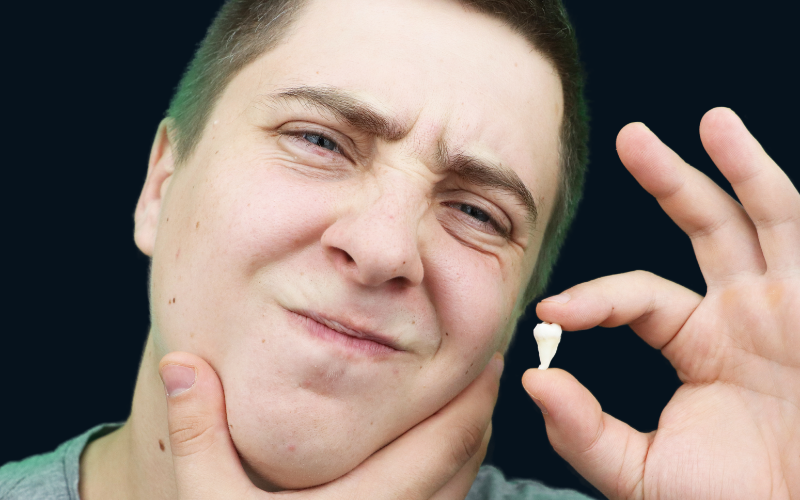Ear And Teeth Pain

Ear and teeth pain can be a debilitating and frustrating experience, affecting not only our daily lives but also our overall well-being. The complex relationship between the ears, teeth, and jaw can sometimes lead to referred pain, where the sensation of pain is felt in a different location from its actual source. Understanding the potential causes and relationships between ear and teeth pain is crucial for effective diagnosis and treatment.
One common cause of ear and teeth pain is temporomandibular joint (TMJ) disorder. The TMJ is a joint that connects the jawbone to the skull, located just in front of the ear. Dysfunction or inflammation of the TMJ can lead to pain in the jaw, face, and ears, as well as clicking or popping sounds when opening or closing the mouth. Additionally, teeth grinding or clenching, often associated with TMJ disorders, can exacerbate the pain, affecting both the ears and the teeth.
Another potential cause is dental issues, such as tooth decay, gum disease, or an abscess. These conditions can lead to severe pain that might radiate to the ears, especially if the infection spreads to the surrounding tissues. Sinus infections can also contribute to ear and teeth pain, as the sinuses are located close to the teeth and ears. The pressure and congestion associated with sinusitis can cause referred pain in these areas.
Ear infections themselves can be a direct cause of ear pain, which might sometimes be accompanied by toothache-like sensations due to the shared nerve pathways. The trigeminal nerve, responsible for facial sensation, including the teeth and jaw, and the facial nerve, which controls facial expressions and carries taste sensations from the tongue, can sometimes confuse pain signals, leading to the sensation of pain in the teeth when the actual problem is in the ear.
Lastly, a less common but possible cause is trigeminal neuralgia, a chronic pain condition that affects the trigeminal nerve. This condition can cause intense shock-like or stabbing pain in parts of the face, including the teeth and ears, often triggered by minor stimuli like touching the face or eating.
Given the complexity of ear and teeth pain, a comprehensive approach to diagnosis is necessary. This may involve consultations with both dentists and ear, nose, and throat (ENT) specialists to rule out various causes. Diagnostic tools such as X-rays, CT scans, or MRIs may be used to examine the teeth, jaw, sinuses, and TMJ.
Treatment options vary depending on the underlying cause. For TMJ disorders, treatment might include pain relievers, muscle relaxants, or physical therapy to relax the jaw muscles. A mouth guard can help alleviate teeth grinding and clenching. Dental issues require appropriate dental care, which could range from fillings for tooth decay to root canal treatments for abscesses. Ear infections may be treated with antibiotics or, in some cases, surgery. For sinus infections, treatment typically involves antibiotics and decongestants to manage symptoms.
In the case of trigeminal neuralgia, treatment often involves anticonvulsant medications to block the pain signals. In severe cases, surgery might be considered to relieve pressure on the nerve.
Practical Steps for Relief
For individuals experiencing ear and teeth pain, several practical steps can provide relief while awaiting professional diagnosis and treatment:
- Maintain Good Oral Hygiene: Regular brushing and flossing can help prevent dental issues.
- Avoid Grinding and Clenching: Conscious efforts to relax the jaw and avoid grinding teeth can reduce TMJ strain.
- Use Warm Compresses: Applying a warm, moist washcloth to the affected area can help ease pain and reduce muscle tension.
- Stay Hydrated: Drinking plenty of fluids can help thin out mucus and promote sinus drainage.
- Elevate Your Head: Sleeping with your head slightly elevated can help reduce sinus congestion.
The Importance of Professional Consultation
Given the complexity and potential overlapping causes of ear and teeth pain, consulting with healthcare professionals is essential. Only through a comprehensive diagnosis can the underlying cause be identified and appropriate treatment initiated. Delaying professional consultation can lead to prolonged suffering and potentially exacerbate the condition, making treatment more challenging.
Future Perspectives and Emerging Trends
The future of diagnosing and treating ear and teeth pain may involve more advanced imaging technologies and minimally invasive procedures. Research into the neurological basis of pain perception and transmission may lead to new treatments targeting the nervous system’s response to pain. Additionally, personalized medicine approaches, considering an individual’s genetic, environmental, and lifestyle factors, could become more prevalent in treating complex pain conditions.
Addressing Potential Concerns and Misconceptions
One common misconception is that ear and teeth pain are always related to dental issues. While dental problems can certainly cause pain, the interconnection between the ears, teeth, and jaw means that the source of pain can often be elsewhere. It’s also mistakenly believed that these pains are always severe and debilitating. While they can be, many cases involve manageable discomfort that still warrants medical attention to prevent escalation.
Conclusion and Key Takeaways
Ear and teeth pain, though distressing, can be effectively managed with the right diagnosis and treatment. Understanding the potential causes and seeking professional help are crucial steps towards relief. By maintaining good oral hygiene, avoiding habits that strain the jaw, and staying informed about the latest medical advancements, individuals can better navigate the complexities of ear and teeth pain. Whether the issue stems from TMJ disorders, dental problems, sinus infections, or other causes, a comprehensive and patient-centered approach to care can lead to significant improvement in quality of life.
What are the common causes of ear and teeth pain?
+Common causes include temporomandibular joint (TMJ) disorder, dental issues like tooth decay or gum disease, sinus infections, ear infections, and less commonly, trigeminal neuralgia. Each of these conditions affects the complex interplay between the ears, teeth, and jaw in different ways.
How are ear and teeth pain diagnosed?
+Diagnosis involves a comprehensive approach, including consultations with dentists and ENT specialists, and may involve imaging tests like X-rays, CT scans, or MRIs to examine the teeth, jaw, sinuses, and TMJ. A thorough medical history and physical examination are also crucial.
What treatment options are available for ear and teeth pain?
+Treatment depends on the underlying cause and can include pain relievers, muscle relaxants, or physical therapy for TMJ disorders; appropriate dental care for dental issues; antibiotics for ear or sinus infections; and anticonvulsant medications for trigeminal neuralgia. In some cases, surgery may be necessary.
Can ear and teeth pain be prevented?
+While not all cases can be prevented, maintaining good oral hygiene, avoiding teeth grinding and clenching, and managing stress can reduce the risk of developing conditions that lead to ear and teeth pain. Regular dental check-ups and addressing sinus or ear issues promptly can also help prevent complications.
What are the future trends in treating ear and teeth pain?
+Future trends may include the use of advanced imaging technologies for more precise diagnoses, minimally invasive surgical techniques, and personalized medicine approaches to treat pain conditions. Research into the neurological aspects of pain may also lead to new, targeted treatments.


